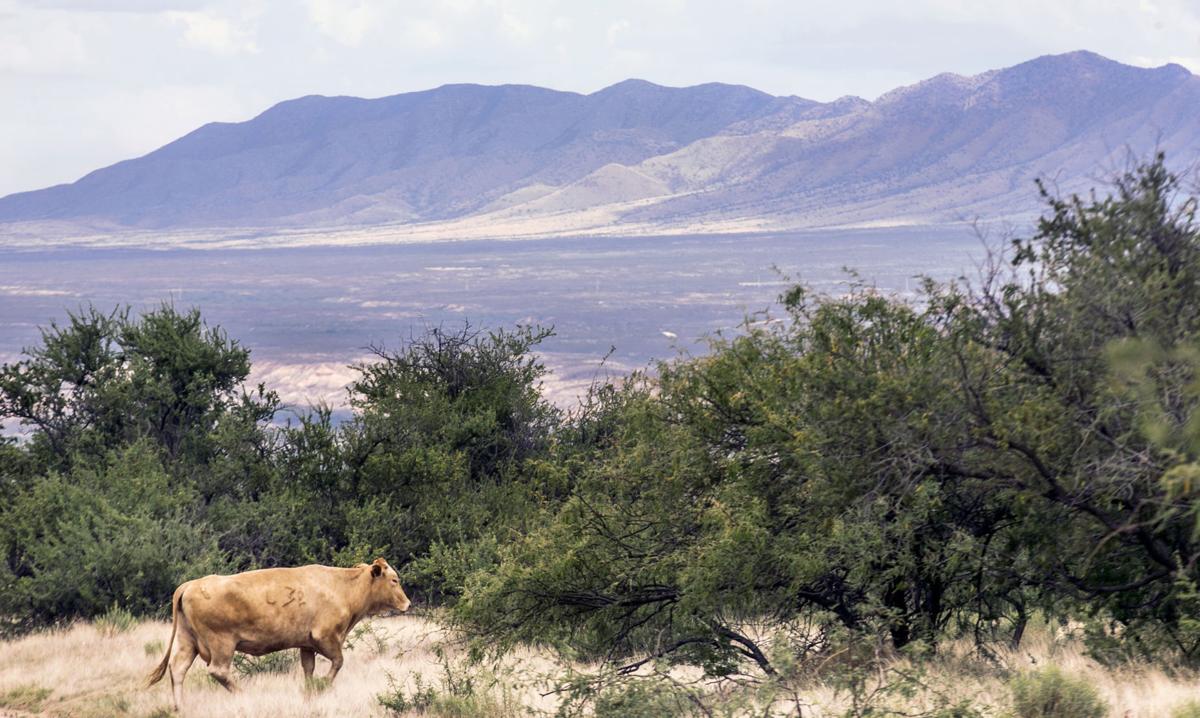Federal wildlife officials are pushing back against the Army Corps of Engineers’ determination that restoration work related to a 28,000-home development in Benson is unlikely to affect protected species.
In an Oct. 14 letter to the Corps, obtained by the Star this week, the U.S. Fish and Wildlife Service disagreed with the Corps’ conclusion about unlikely environmental impacts, which was based on a biological evaluation of a “mitigation parcel” outside the bounds of the Villages at Vigneto development.
But the wildlife service also emphasized that it would not move forward in consulting with the Corps about the mitigation parcel unless the entire 12,300-acre Vigneto development was included in the discussion.
The mitigation parcel is part of developers’ plan to offset unavoidable impacts at the Vigneto site. The off-site 144-acre parcel will undergo restoration such as weed removal, planting of native species and erosion control.
In its letter, the wildlife service said the mitigation parcel and the development itself are “interrelated actions” that must be evaluated together.
That’s a crucial point for environmentalists who have long argued the Corps should evaluate the proposed master planned community as a whole, rather than in a piecemeal way that could understate the project’s effects on critical habitats and protected species that rely on them in the San Pedro Valley.
“The Corps really chooses to define their purview as narrowly as they possibly can,” said Karen Fogas, executive director of the Tucson Audubon Society. The wildlife service is pushing the Corps to recognize that, for threatened species, survival depends on looking at the environment holistically, she said.
“We’re really delighted the Fish and Wildlife Service landed on the same conclusions that we were putting forth, and they have done that in a very comprehensive way,” Fogas said. “This is a win for wildlife.”
A spokesman for Vigneto developer El Dorado Holdings Inc. in Phoenix did not respond to requests for comment Wednesday.
The Audubon Society is among six environmental groups that filed a lawsuit in May arguing the Corps would be violating the Endangered Species Act if it failed to consult with the wildlife service about a project that could harm threatened species.
The ball is now in the Army Corps’ court, said Chris Eaton, attorney with Earthjustice, the environmental law firm that filed the suit.
The wildlife service cannot force the Army Corps to comply with its request to consult on the entire Vigneto project but if the Corps doesn’t comply, environmentalists can use the Corps’ decision to bolster their argument that the Corps is in violation of the Endangered Species Act, he said.
Corps spokesman Dave Palmer did not respond to requests for comment on Wednesday.
Benson City Councilman Jeff Cook said he “completely agrees” with the wildlife service’s request for a more comprehensive review. Wells around the region are already starting to dry up, and Cook said he wants a realistic picture of how Vigneto will affect the underground aquifer that feeds Benson’s wells.
“I feel that the city rushed through the development agreement and the approval of the final master plan (for Vigneto) without taking into consideration the impacts it’s going to have on our entire community,” he said. “I think the Army Corps and Fish and Wildlife are looking into it in-depth, the way we should have.”
In July, the Benson City Council voted unanimously to approve the final plan for Vigneto, which includes retail and office space, parks, community trails, schools, medical facilities, vineyards and a golf course.
PERMIT REVOKED
Days after the City Council’s approval, the Corps revoked a crucial permit for Vigneto, in a victory for environmentalists who had argued that the decade-old Clean Water Act permit was no longer relevant. The permit was originally approved for a smaller, canceled project called Whetstone Ranch. In 2014, Whetstone’s developers transferred their permit to Vigneto’s developers, El Dorado Holdings.
But the 12,300-acre Vigneto footprint is 4,000 acres bigger than Whetstone’s. Developers had argued the additional acreage could obtain permits separately.
Critics of Vigneto said the permit suspension was an important step toward initiating consultation between the Army Corps and the Fish and Wildlife Service — but the scope of that consultation remains to be seen. Consultation could take just a few months or much longer if the scope is extensive.
Developers said in July they hoped to break ground by next summer.
In its recent letter, the wildlife service said it would not initiate consultation until the Corps did a full biological assessment of the entire development — not just the originally permitted 8,200 acres — and the mitigation parcel, including analysis of direct and indirect effects.
That includes considering the impact of Vigneto’s groundwater pumping, the letter said.
“Such a displacement of groundwater from the aquifer is likely to reduce flow in the San Pedro River, in reaches designated as critical habitat for the Southwestern willow flycatcher and proposed as critical habitat for the yellow-billed cuckoo and Mexican gartersnake,” the letter said.
Environmental groups suing the Corps also want consultation to include the jaguar, ocelot and lesser long-nosed bat.
“We hope the Corps is paying attention, and we hope for a response from them sooner rather than later,” Fogas said.





